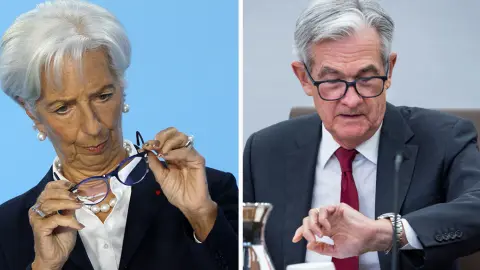The long wait for the pivot
There are tentative signs that central bankers on both sides of the Atlantic are considering a pivot to more modest interest rate hikes. But this could be months away
As we approach the end of the year, many of us are waiting. Waiting for the end of the war, waiting for inflation to finally peak, waiting for the Christmas holiday season to begin. For financial markets, the wait is on central banks and whether they will pivot.
“Pivot” is probably not the correct term to use as a pivot would imply a real turning point in central bank policies, while what markets - and we - are actually looking for are signs of a slowdown and an eventual end to the current rate hike cycles.
A difficult road ahead
Getting to this pivotal moment is easier said than done. Major central banks are still facing high and, in some cases, increasing inflation, while signs of economic slowdowns and recessions are growing. It will be too little too late for central banks to simply bet that weaker demand will break down inflation and inflation expectations, as long as inflation largely remains a supply-side issue. Admittedly, given the importance housing costs play in the US inflation measure, the Federal Reserve is in a better position to bring down inflation (via higher mortgage rates depressing the costs of shelter) than, for example, the European Central Bank. What complicates central bankers’ decisions is the fact that they have now rushed so much toward policy normalisation that they cannot see the full impact of their decisions yet. It typically takes at least six to nine months before monetary policy changes have found their full way into the real economy. This time lag increases the risk of overshooting. At the same time, however, the stickiness of inflation over the last two years has also increased the risk that a too-premature end to tighter monetary policy will be insufficient in returning the inflation genie to the bottle. It’s not easy being a central banker these days.
Signs of a slowdown
Still, we have seen tentative signs by central bankers on both sides of the Atlantic Ocean suggesting that a slowdown, or even an end to rate hikes, is being considered an option. It will not necessarily be an explicit end to hikes but rather conveyed as a "taking stock pause". As the looming economic slowdowns and recessions will be more visible in December, we expect major central banks to slow down their tightening efforts and eventually end them in the first quarter of next year. Don’t forget that balance sheet deleveraging can easily be a substitute to rate hikes in 2023.
In Europe, in particular, the inflation shock will dominate next year’s headlines. While government price caps can limit inflationary pressure in the short run, they will push up headline inflation immediately when they are lifted again. Government subsidies which offset the negative effects of higher energy prices on households and consumers do actually extend inflationary pressures. Also, the energy crisis won't disappear after this winter but will last until the winter of 2023/24 as national gas reserves will start the next year at lower levels than in the spring of 2022, putting upward pressure on the demand for natural gas.
Whether they like it or not, the worsening economic backdrop has brought many central bankers closer to the moment of slowing tightening efforts, and eventually even pausing rate hikes. Financial markets waiting for the pivot might not be like waiting for Godot, but for a real pivot, headline and core inflation will first need to come down significantly. This is a scenario we definitely do not foresee before next summer.
This publication has been prepared by ING solely for information purposes irrespective of a particular user's means, financial situation or investment objectives. The information does not constitute investment recommendation, and nor is it investment, legal or tax advice or an offer or solicitation to purchase or sell any financial instrument. Read more
Download
Download article
4 November 2022
ING’s November Monthly: The long wait for the pivot This bundle contains 14 Articles